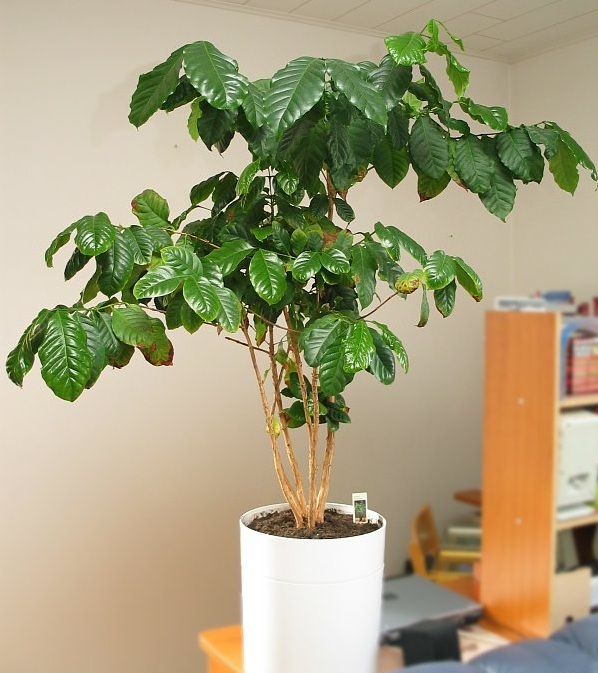Technical Essentials of planting domestic Coffee trees

First, seeds: they can be picked by themselves or purchased online.
Second, seed treatment: choose coffee seeds with good quality and parchment.
Third, planting: the treated seeds can be planted directly or soaked in water before planting. Direct planting is very simple, put the seeds directly into vermiculite, the thickness of the surface soil and the thickness of the seeds can be the same; soaking varies according to different seasons. If it is spring and autumn, the time can be longer and summer shorter. It is best to use cold water to reduce the loss of seed nutrition. After soaking in water, as before, it is also put into vermiculite and the surface is covered with soil.
Fourth, seedling emergence: planting in spring and autumn, emergence in about 30 days; planting in summer, emergence in 7-10 days. Although there is heating in winter, there are still seasonal differences between winter and summer, so the emergence time is also very long.
Transplanting: when the true leaves of the seedlings grow, they can be transplanted. When selecting a flowerpot, the diameter of the pot mouth is roughly the same as that of the plant crown, and the root system can be extended.
Sixth, the choice of basin soil: the basin soil that needs to be selected is very simple, generally there are two kinds: one is garden soil, which can be well maintained; the other is three-in-one: peat, vermiculite and perlite = 3:2:2.
7. Key points for maintenance:
(1) soil requirements: strictly speaking, coffee also likes weakly acidic soil, but the requirements are not very strict. So both the garden soil and the three-in-one soil can ensure its normal growth. If some fermented rice washing water is properly watered during the growth period, it will be helpful to maintain the acidity of the soil. Do not need to wash rice water, use ordinary dried tap water, also grow well.
(2) watering can see dry and wet: large amount of water is needed in the seedling stage, and a little carelessness will cause the seedling to dry a little, so be very careful and the basin soil should not be too dry. A year later, the seedlings will be more drought-tolerant, even if there is not enough water, it will not affect its growth.
(3) Illumination: coffee likes light, without sunlight, it will grow poorly. But summer also avoid exposure, exposure will lead to leaf damage, it is best to put in a place with scattered light to spend the summer.
(4) fertilization: the requirement of fertilizer for coffee is not high.
(5) change the basin: once a year. Remove the old roots and plant some of the original soil into the new pot.
Matters needing attention:
(1) Coffee is a tree, so during the growing period, the following leaves will gradually become old and yellowed, which is a normal phenomenon of plant growth, do not panic, pay attention to timely cleaning of old leaves and yellow leaves
(2) it takes three years for coffee to bloom. The flower has a jasmine-like aroma, which is lighter than jasmine, and has the bitter taste of coffee after taste. The flowering period is from February to May and blossoms continuously. Bear fruit after anthesis. The fruit is green. No artificial pollination is needed.
(3) if the coffee tree is to have luxuriant leaves and flowers, it needs to be properly pointed to promote its side branches to germinate and have a good-looking crown.
(4) with the increase of age, the trunk of the coffee tree becomes woody, the color of the stem changes from green to yellowish brown, and the epidermis is chapped.
(the article comes from the blog)
Important Notice :
前街咖啡 FrontStreet Coffee has moved to new addredd:
FrontStreet Coffee Address: 315,Donghua East Road,GuangZhou
Tel:020 38364473
- Prev

Water is definitely an important factor in determining the final quality of coffee.
Maxwell Colonna-Dashwood, winner of two British barista competitions in 2014 and 2015, explains how water quality affects coffee quality. At the beginning of the lecture, Corona Dashwood prepared three coffee samples A, B and C for the audience. The audience was invited to taste three cups of coffee and record the differences in taste. Coffee
- Next

A new way to get rid of the heat is to have a cup of iced coffee!
It is also a child, but there is always a kind of child called someone else's child; it is also coffee, but there is always a kind of coffee called other people's coffee. With the hot summer approaching, many cafes have launched a new series of fancy iced coffee, providing coffee lovers with more choices of summer ice drinks, as well as the ultimate coffee experience as always. But other people's coffee is high-end and high-end.
Related
- What is the meaning of lactic acid fermentation with coffee bean treatment?
- How to judge the state of foam by sound?
- How does the latte pull out the unicorn pattern? Come to get for a little trick to improve the flower pull!
- Will flower pulling affect the taste of the latte?
- Do you know the history of coffee?
- The difference between honey treatment and sun washing what is raisin honey treatment?
- What kind of milk can a novice use to make coffee foam to keep the foam longer? The correct method and skills of milking tutorial sharing
- Why do washed coffee beans taste sour? Flavor characteristics of washed Coffee
- Introduction to the skill of how to practice the size and height of water injection around the circle of hand-brewed coffee
- How do beginners practice coffee flower drawing from scratch?

